-
 Bitcoin
Bitcoin $83,002.8173
-1.53% -
 Ethereum
Ethereum $1,789.8108
-1.26% -
 Tether USDt
Tether USDt $0.9996
0.01% -
 XRP
XRP $2.1274
-0.12% -
 BNB
BNB $592.2431
-0.97% -
 Solana
Solana $119.1598
-2.76% -
 USDC
USDC $1.0000
0.01% -
 Dogecoin
Dogecoin $0.1681
-0.92% -
 Cardano
Cardano $0.6492
-1.84% -
 TRON
TRON $0.2378
-0.90% -
 UNUS SED LEO
UNUS SED LEO $9.0490
-4.47% -
 Chainlink
Chainlink $12.6724
-2.46% -
 Toncoin
Toncoin $3.2495
-4.20% -
 Stellar
Stellar $0.2500
-3.61% -
 Avalanche
Avalanche $17.9358
-1.14% -
 Shiba Inu
Shiba Inu $0.0...01225
-0.09% -
 Sui
Sui $2.2095
-2.78% -
 Hedera
Hedera $0.1613
-2.64% -
 Litecoin
Litecoin $82.2053
-2.61% -
 Polkadot
Polkadot $3.9330
-2.77% -
 MANTRA
MANTRA $6.2724
-0.02% -
 Bitcoin Cash
Bitcoin Cash $298.9098
-0.31% -
 Dai
Dai $1.0001
0.01% -
 Bitget Token
Bitget Token $4.4381
-2.33% -
 Ethena USDe
Ethena USDe $0.9991
-0.01% -
 Pi
Pi $0.5881
11.02% -
 Hyperliquid
Hyperliquid $11.8159
-0.99% -
 Monero
Monero $213.1994
-1.09% -
 Uniswap
Uniswap $5.8098
-1.72% -
 OKB
OKB $51.6086
5.77%
How to judge the best buying time for cryptocurrency
To buy crypto wisely, analyze market trends, understand cycles, assess risk tolerance, use DCA, stay informed, diversify, and consider technical and on-chain metrics.
Mar 30, 2025 at 01:28 pm
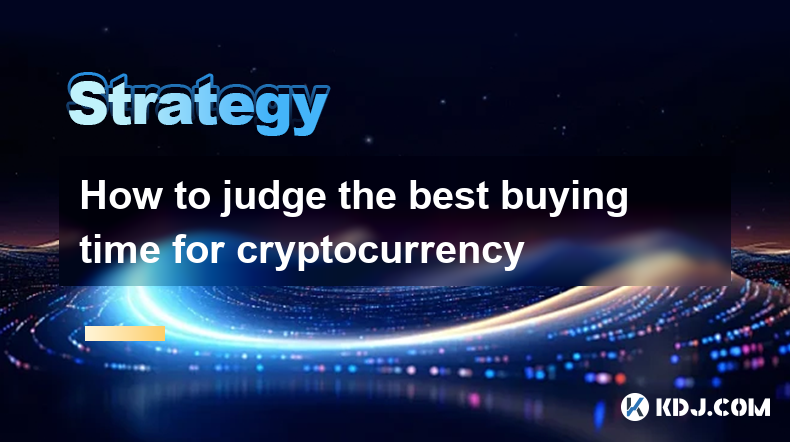
Judging the optimal time to buy cryptocurrency is a complex question with no single, universally accepted answer. Market timing is notoriously difficult, even for seasoned professionals. However, by understanding various factors and employing sound strategies, you can improve your chances of buying at relatively favorable prices. This article will explore several methods and considerations.
Analyzing Market Trends and Indicators
One crucial aspect is understanding market trends. This involves analyzing price charts, identifying support and resistance levels, and observing overall market sentiment. Technical analysis, using tools like moving averages and relative strength index (RSI), can help predict short-term price fluctuations. However, remember that technical analysis is not foolproof and should be used in conjunction with other methods. Fundamental analysis, which focuses on the underlying technology and adoption of a cryptocurrency, offers a longer-term perspective. Consider factors like network upgrades, regulatory changes, and overall market capitalization.
Understanding Market Cycles
Cryptocurrency markets are cyclical, experiencing periods of significant growth (bull markets) and sharp declines (bear markets). Identifying the stage of the cycle is crucial. Buying during the early stages of a bull market can yield substantial returns, while buying near the peak is risky. Conversely, buying during a bear market can be advantageous if you believe in the long-term potential of the asset, but requires significant risk tolerance. Recognizing these cycles requires studying historical price data and understanding market psychology.
Considering Risk Tolerance and Investment Goals
Before investing, honestly assess your risk tolerance and investment goals. High-risk tolerance allows for investment strategies that focus on short-term gains and volatile assets. Conversely, a low-risk tolerance suggests a long-term strategy with less volatile assets. Your investment goals, whether short-term or long-term, should heavily influence your buying strategy. A long-term investor might not worry about short-term price fluctuations as much as a day trader.
Utilizing Dollar-Cost Averaging (DCA)
Dollar-cost averaging is a popular strategy that involves investing a fixed amount of money at regular intervals, regardless of price fluctuations. This mitigates the risk of investing a large sum at a market peak. DCA reduces the emotional impact of market volatility and spreads out the risk over time. It's a relatively passive strategy, suitable for investors who prefer a less hands-on approach.
Monitoring News and Events
Staying informed about news and events affecting the cryptocurrency market is essential. Major announcements, regulatory changes, and technological breakthroughs can significantly impact prices. Following reputable news sources and social media discussions can provide valuable insights, but always be critical of information and avoid relying solely on social media sentiment. Be aware of potential scams and misinformation.
Diversification and Portfolio Management
Diversification is key to mitigating risk. Don't put all your eggs in one basket. Investing in a diversified portfolio of cryptocurrencies across different sectors can help reduce the impact of individual asset price fluctuations. Regularly review and adjust your portfolio based on market changes and your investment goals. This includes rebalancing to maintain your desired asset allocation.
Utilizing Technical Indicators
Many technical indicators can help in timing market entries. Moving averages, for example, smooth out price fluctuations and can help identify trends. RSI (Relative Strength Index) measures the momentum of price changes and can signal overbought or oversold conditions. MACD (Moving Average Convergence Divergence) identifies changes in momentum. However, remember these are just tools; they don't guarantee profits.
Identifying Support and Resistance Levels
Support levels represent price points where buying pressure is expected to outweigh selling pressure, potentially causing a price bounce. Resistance levels are the opposite; they indicate price points where selling pressure is expected to dominate. Identifying these levels on price charts can help determine potential entry and exit points. However, these levels are not static and can shift based on market conditions.
Understanding On-Chain Metrics
On-chain metrics provide insights into the activity and behavior within a cryptocurrency's network. Metrics like transaction volume, active addresses, and network hash rate can provide clues about market sentiment and potential price movements. Analyzing these metrics requires a deeper understanding of blockchain technology.
Considering Sentiment Analysis
Sentiment analysis involves gauging the overall mood and opinion surrounding a particular cryptocurrency. This can be done by analyzing social media trends, news articles, and forum discussions. Positive sentiment may suggest increased buying pressure, while negative sentiment might indicate the opposite. However, sentiment analysis is subjective and should be used cautiously.
Frequently Asked Questions
Q: Is there a guaranteed best time to buy cryptocurrency?
A: No, there's no guaranteed best time. Market timing is inherently unpredictable. Strategies like DCA aim to mitigate risk rather than predict perfect entry points.
Q: How can I learn more about technical analysis?
A: Numerous online resources, including courses, tutorials, and books, cover technical analysis. Practice is key to mastering these techniques.
Q: What are the risks of trying to time the market?
A: The risk is missing out on potential gains if you wait too long or buying high and selling low due to incorrect predictions.
Q: Are there any resources to help me track on-chain metrics?
A: Several websites and platforms provide on-chain data for various cryptocurrencies. Research and choose reputable sources.
Q: How important is diversification in cryptocurrency investing?
A: Diversification is crucial for risk management. It helps reduce the impact of losses in any single asset.
Q: What is the role of fundamental analysis in cryptocurrency investment decisions?
A: Fundamental analysis focuses on the underlying technology, adoption rate, and team behind a cryptocurrency to assess its long-term potential.
Q: How can I stay updated on cryptocurrency news and events?
A: Follow reputable news sources, blogs, and social media accounts dedicated to cryptocurrency. Be critical of the information you consume.
Q: What's the difference between a bull market and a bear market in crypto?
A: A bull market is characterized by rising prices and optimism, while a bear market is characterized by falling prices and pessimism.
Q: Is dollar-cost averaging suitable for all investors?
A: DCA is a relatively low-risk strategy suitable for most investors, particularly those with lower risk tolerance. However, it may not be optimal for those seeking high short-term gains.
Q: How do I determine my risk tolerance before investing in crypto?
A: Consider how much you're willing to lose without significantly impacting your financial well-being. Only invest what you can afford to lose.
Disclaimer:info@kdj.com
The information provided is not trading advice. kdj.com does not assume any responsibility for any investments made based on the information provided in this article. Cryptocurrencies are highly volatile and it is highly recommended that you invest with caution after thorough research!
If you believe that the content used on this website infringes your copyright, please contact us immediately (info@kdj.com) and we will delete it promptly.
- Altcoin Season Has Not Yet Arrived, but Market Participants Are Watching Closely as Bitcoin Falters
- 2025-04-06 03:40:12
- Ethereum (ETH) Rivals Are Attracting Increasing Attention from Investors
- 2025-04-06 03:40:12
- Ozak AI (OZ) Tokenizes Artificial Intelligence, Aiming to Surge 1000x From Its Presale Price
- 2025-04-06 03:35:12
- Binance Unveils Groundbreaking Integration That Shatters Silos Between CEXs and DEXs
- 2025-04-06 03:35:12
- Shiba Inu (SHIB/USD) is Up 5% on Tuesday
- 2025-04-06 03:30:13
- Bybit Web3 Announces Streamlining of Offerings to Enhance User Experience
- 2025-04-06 03:30:13
Related knowledge
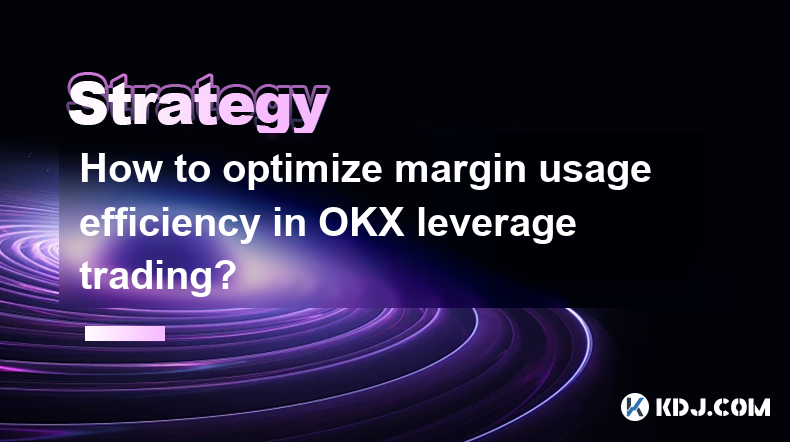
How to optimize margin usage efficiency in OKX leverage trading?
Apr 04,2025 at 03:21pm
Margin usage efficiency is a critical aspect of leverage trading on platforms like OKX, where traders aim to maximize their returns while managing risk. Understanding how to optimize margin usage can significantly enhance your trading performance. This article will delve into various strategies and techniques to help you make the most out of your margin...
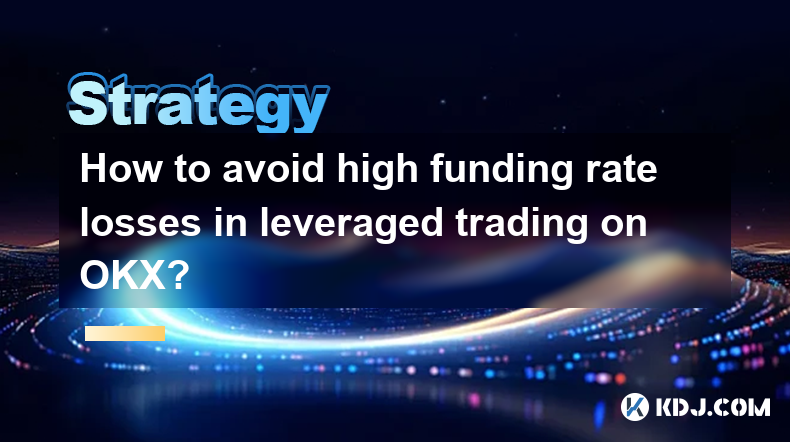
How to avoid high funding rate losses in leveraged trading on OKX?
Apr 04,2025 at 05:28pm
Understanding Funding Rates in Leveraged Trading on OKXFunding rates are a critical component of leveraged trading on platforms like OKX. They represent the periodic payments made between traders to maintain the balance between the futures price and the spot price of the underlying asset. When trading with leverage, understanding and managing funding ra...
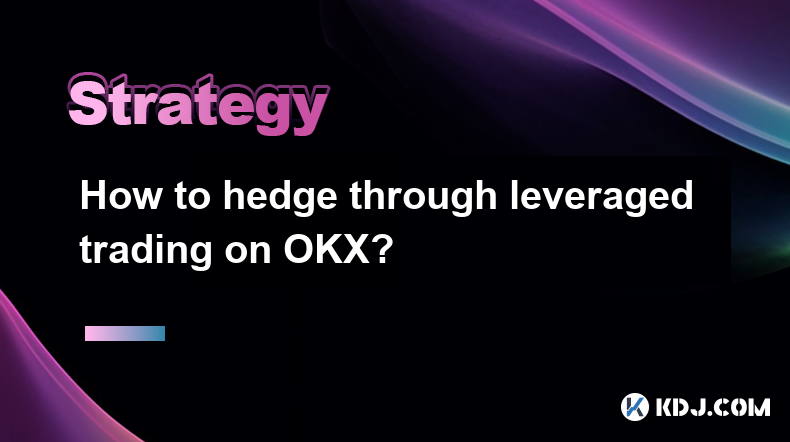
How to hedge through leveraged trading on OKX?
Apr 04,2025 at 01:42pm
Hedging through leveraged trading on OKX can be an effective strategy for managing risk in the volatile cryptocurrency market. This article will guide you through the process of setting up and executing a hedging strategy using OKX's leveraged trading features. We will cover the basics of leveraged trading, how to set up a hedge, and the steps to execut...
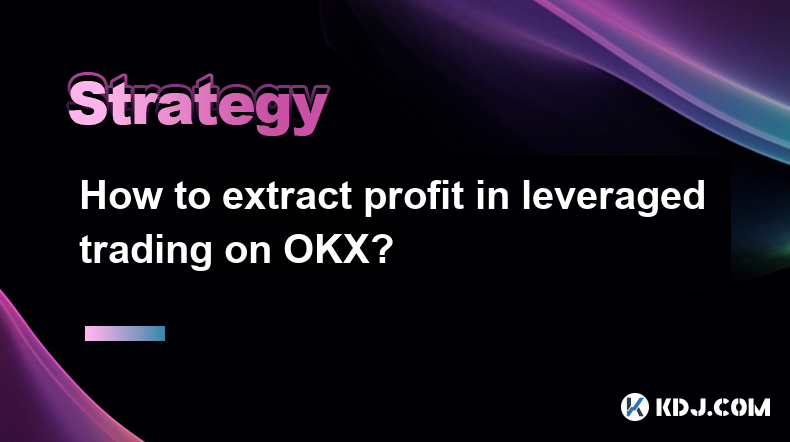
How to extract profit in leveraged trading on OKX?
Apr 04,2025 at 05:42am
Leveraged trading on OKX can be a powerful tool for traders looking to amplify their potential profits. However, it also comes with increased risk, making it essential to understand how to effectively extract profit from these trades. This article will guide you through the process of leveraging OKX's platform to maximize your gains while managing the i...
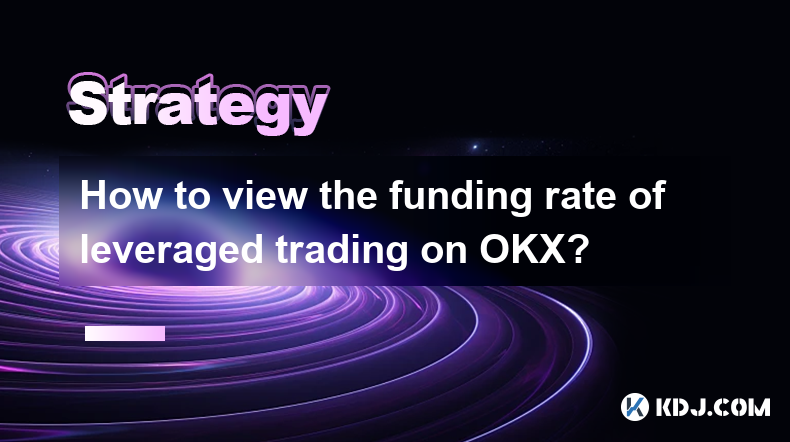
How to view the funding rate of leveraged trading on OKX?
Apr 04,2025 at 07:07am
Understanding the funding rate is crucial for anyone involved in leveraged trading on OKX. The funding rate is a mechanism used in perpetual futures contracts to ensure that the market price of the futures remains closely aligned with the spot price of the underlying asset. This article will guide you through the process of viewing the funding rate on O...
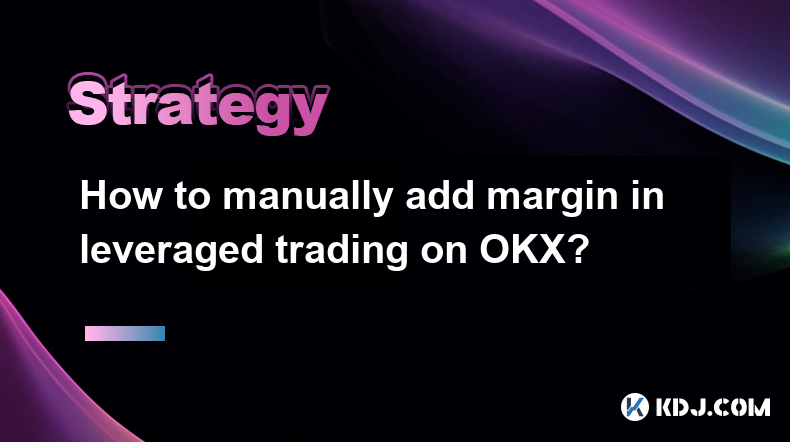
How to manually add margin in leveraged trading on OKX?
Apr 04,2025 at 05:21pm
Introduction to Margin in Leveraged Trading on OKXLeveraged trading on OKX allows traders to amplify their trading positions by borrowing funds from the platform. Margin is the amount of funds required to open and maintain these leveraged positions. Understanding how to manually add margin is crucial for managing your trades effectively and avoiding liq...

How to optimize margin usage efficiency in OKX leverage trading?
Apr 04,2025 at 03:21pm
Margin usage efficiency is a critical aspect of leverage trading on platforms like OKX, where traders aim to maximize their returns while managing risk. Understanding how to optimize margin usage can significantly enhance your trading performance. This article will delve into various strategies and techniques to help you make the most out of your margin...

How to avoid high funding rate losses in leveraged trading on OKX?
Apr 04,2025 at 05:28pm
Understanding Funding Rates in Leveraged Trading on OKXFunding rates are a critical component of leveraged trading on platforms like OKX. They represent the periodic payments made between traders to maintain the balance between the futures price and the spot price of the underlying asset. When trading with leverage, understanding and managing funding ra...

How to hedge through leveraged trading on OKX?
Apr 04,2025 at 01:42pm
Hedging through leveraged trading on OKX can be an effective strategy for managing risk in the volatile cryptocurrency market. This article will guide you through the process of setting up and executing a hedging strategy using OKX's leveraged trading features. We will cover the basics of leveraged trading, how to set up a hedge, and the steps to execut...

How to extract profit in leveraged trading on OKX?
Apr 04,2025 at 05:42am
Leveraged trading on OKX can be a powerful tool for traders looking to amplify their potential profits. However, it also comes with increased risk, making it essential to understand how to effectively extract profit from these trades. This article will guide you through the process of leveraging OKX's platform to maximize your gains while managing the i...

How to view the funding rate of leveraged trading on OKX?
Apr 04,2025 at 07:07am
Understanding the funding rate is crucial for anyone involved in leveraged trading on OKX. The funding rate is a mechanism used in perpetual futures contracts to ensure that the market price of the futures remains closely aligned with the spot price of the underlying asset. This article will guide you through the process of viewing the funding rate on O...

How to manually add margin in leveraged trading on OKX?
Apr 04,2025 at 05:21pm
Introduction to Margin in Leveraged Trading on OKXLeveraged trading on OKX allows traders to amplify their trading positions by borrowing funds from the platform. Margin is the amount of funds required to open and maintain these leveraged positions. Understanding how to manually add margin is crucial for managing your trades effectively and avoiding liq...
See all articles





















































































